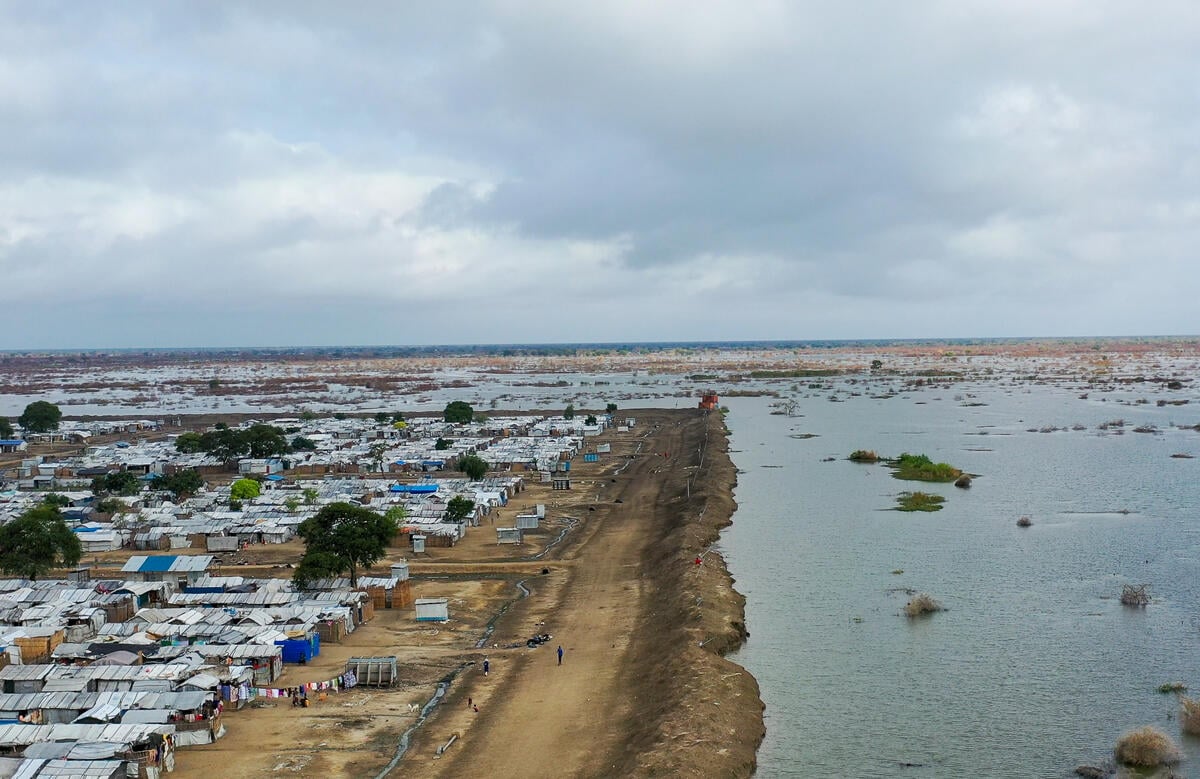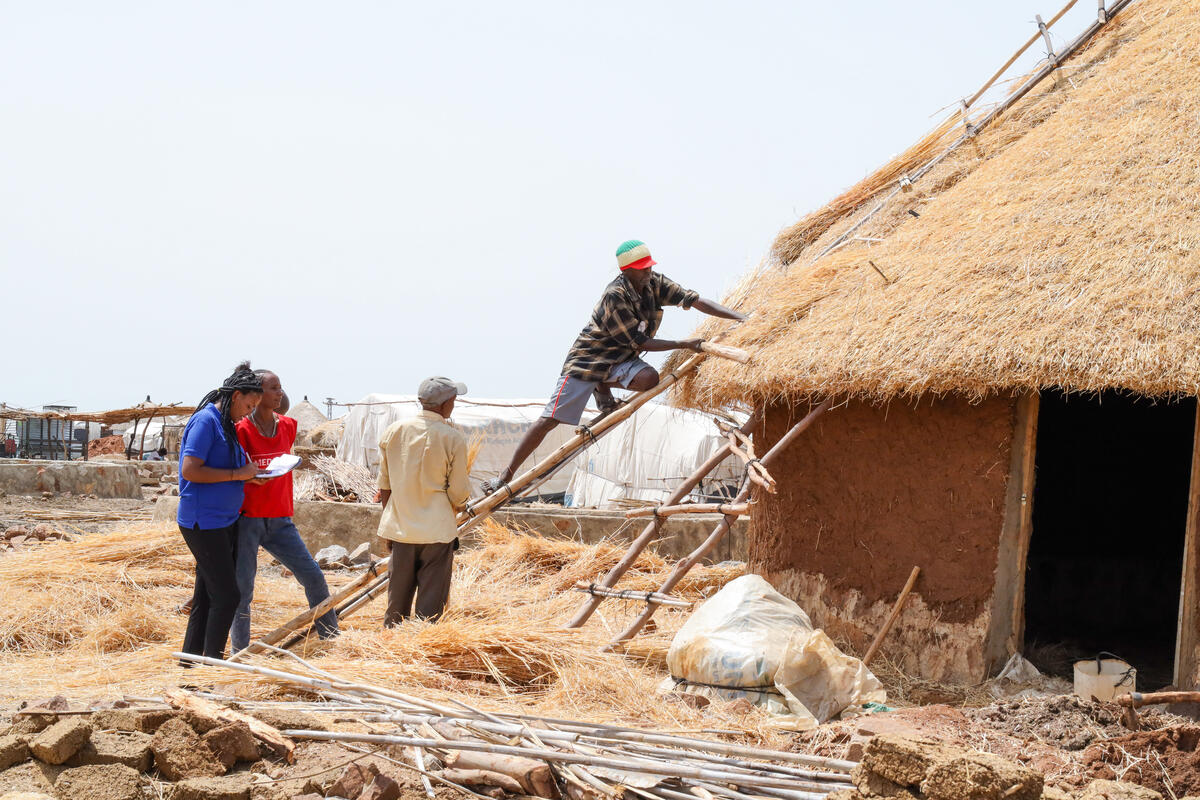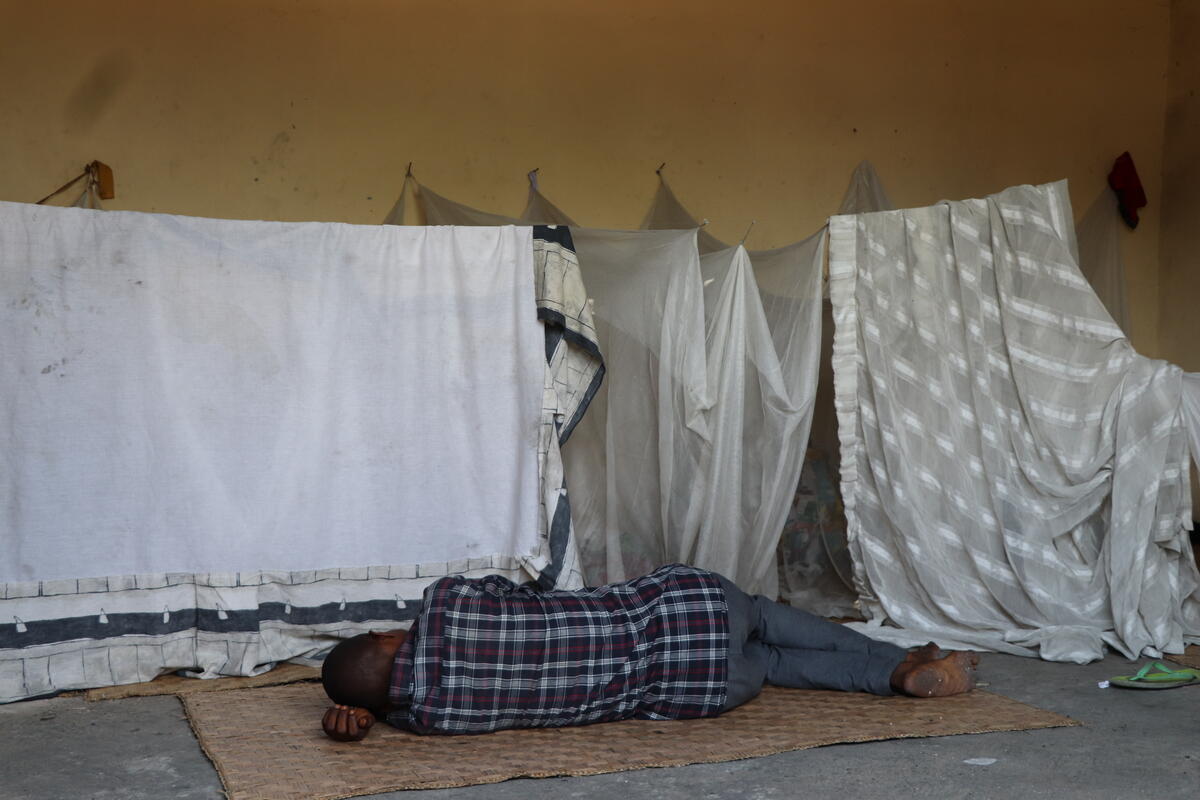UNHCR delivers tents to keep typhoon-affected families together
UNHCR delivers tents to keep typhoon-affected families together

SANTO NINO, Philippines, November 21 (UNHCR) - The Catindoy family thought they were in the clear when their patriarch was plucked from Typhoon Haiyan's clutches and delivered back to them.
But a week later he was dead, lying in church awaiting burial. His family remains displaced and unsure about their future.
UNHCR is working with the Philippine authorities to provide temporary shelter for vulnerable people like them. On Monday, the agency sent some of the 500 tents and 4,000 plastic sheets targeted at typhoon survivors in Tanauan, south of Tacloban in Leyte province. The tents will be set up on sites identified by the local mayor.
When that happens, it would lift a significant burden off the shoulders of the newly-widowed Elena Ada Catindoy. Until two weeks ago, the 61-year-old grandmother led a normal life in San Roque, a coastal community in Tanauan. She sold cooked vegetables for a living while her husband collected and sold coconut shells.
All that changed with the typhoon. Most of the family heeded the warnings and evacuated to a church in nearby Santo Nino ahead of time. But Elena's husband was stubborn. "Four times we asked him to come with us, but he refused. He wanted to stay and protect his coconut shells," said Elena. "When the typhoon happened, the water level rose and he was hit by the steel roof and other heavy things."
By the time he was rescued, the 71-year-old had lost a few fingers and sustained heavy bruising and cuts. They brought him back to the church and treated his injuries at a nearby health unit. But by last weekend he was coughing up blood. He died early on Sunday, the family believes from internal bleeding.
Today, the family has a temporary home at the church in Santo Nino. When not crying, they sit in a daze, trying to make sense of their loss. "We didn't bring anything with us. Luckily we get donations from the church and our relatives," said Elena, pointing to her grandson wearing a pink girl's top given to them.
She hasn't been back to see the house: "I cannot bear to look at it. Everything is gone and there is nothing to look back on." The thought of going back to live by the sea terrifies her. She hopes to stay at the church for as long as possible. If asked to leave, they may move to somewhere near the highway. Anywhere but the seaside.
Asked about her future, Elena shrugged: "Now we are still okay because we're getting donations. But I'm afraid the assistance will stop in a week or a month. What will we eat then?"
The government estimates that 4 million people like the Catindoys have been displaced by the typhoon. Some are living in evacuation centres, some in makeshift sites and others on the ruins of their homes.
As part of the inter-agency response to Typhoon Haiyan, UNHCR is co-leading the protection cluster with the government and is a member of the emergency shelter cluster. The refugee agency is airlifting family-sized tents, plastic sheets, blankets, jerry cans, kitchen sets, solar lamps and 1,000 rolls of plastic sheeting to the Philippines for onward distribution to the typhoon-affected areas. It has appealed for US$15 million to deliver this critical aid.
By Vivian Tan in Santo Nino, Philippines








